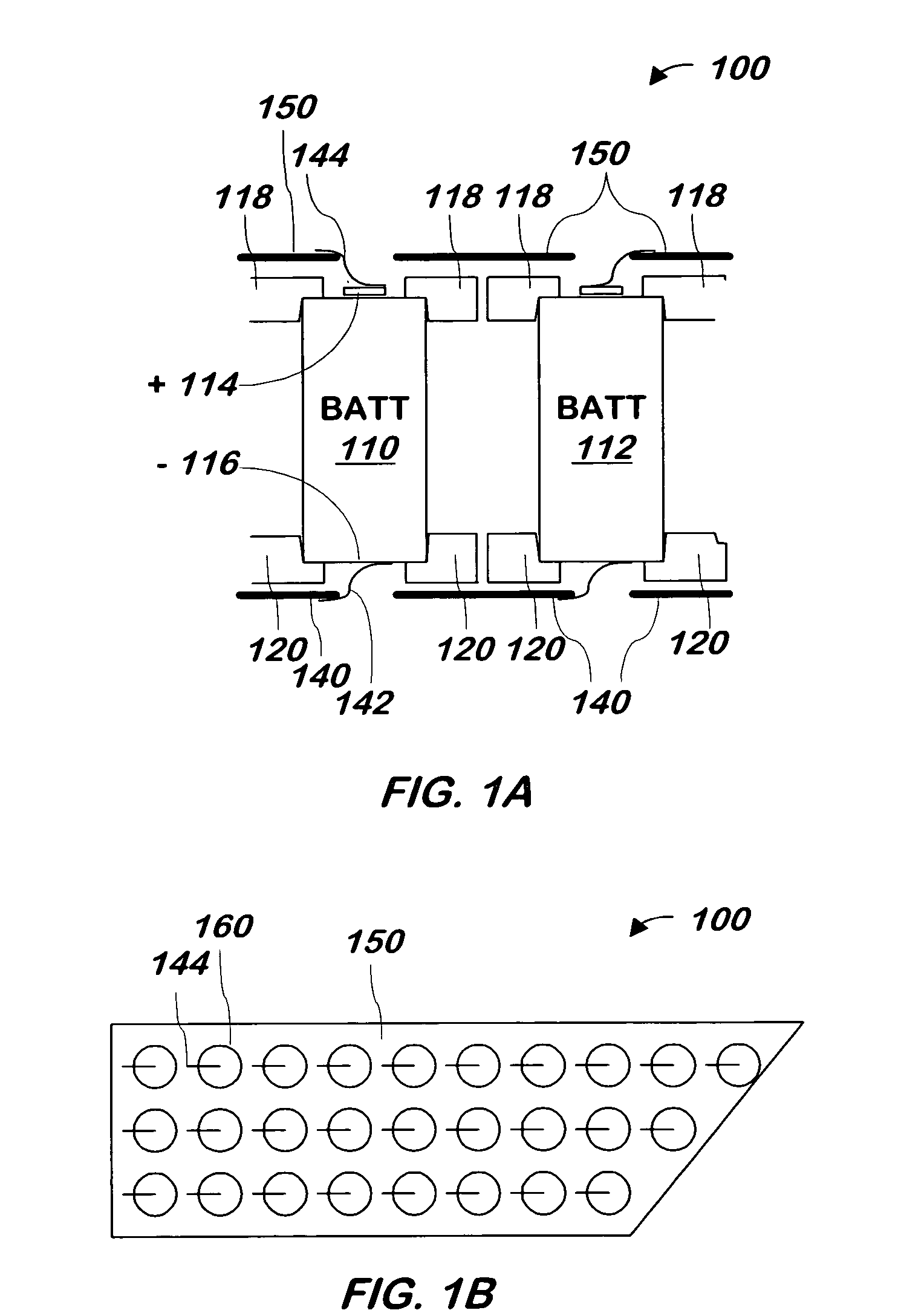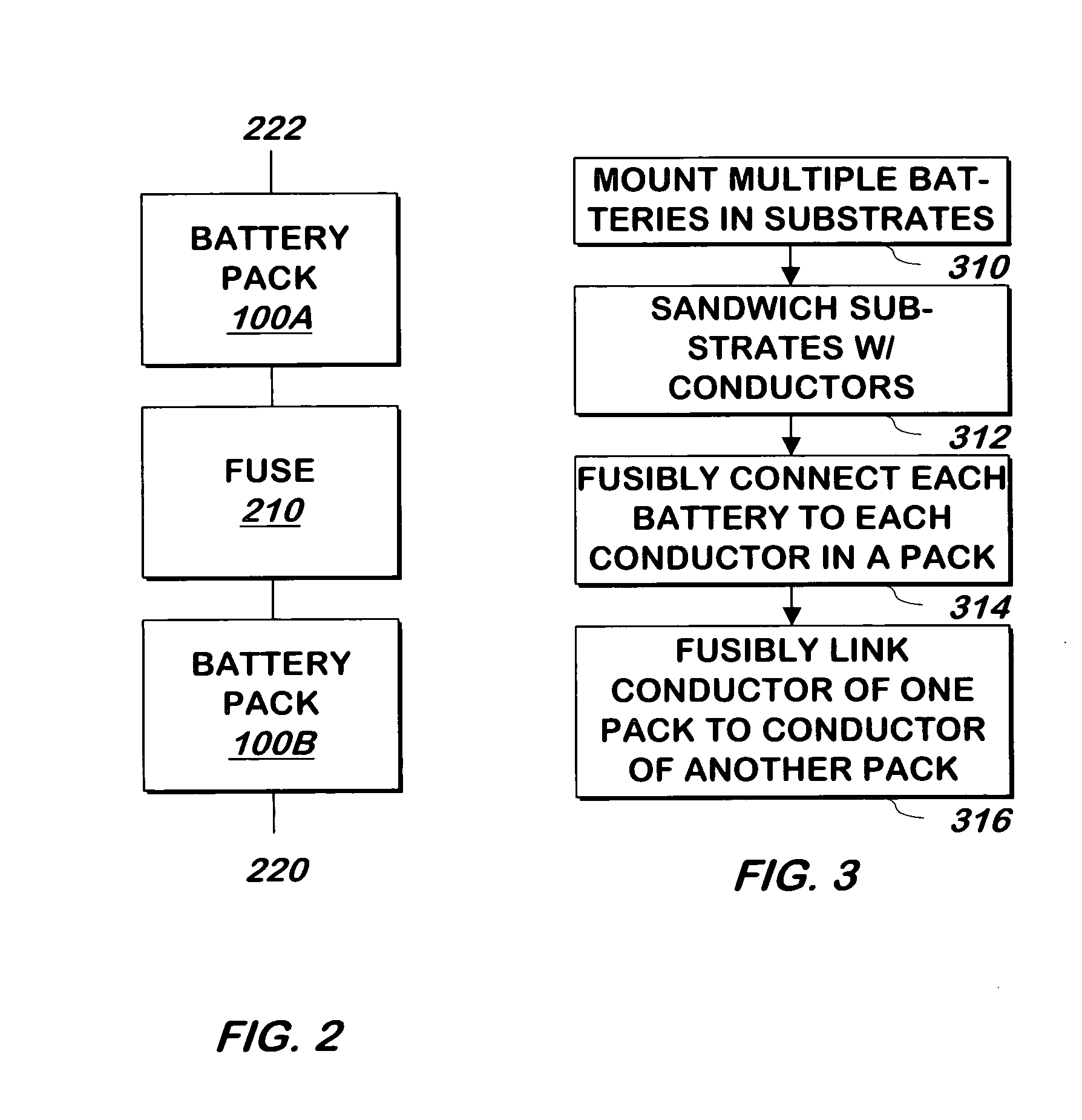System and method for fusibly linking batteries
a technology of fusible linking and batteries, applied in the direction of battery/fuel cell control arrangement, cell components, electric devices, etc., can solve the problems of lack of electrical protection, time-consuming and prone to failure, and difficult to test the connection between each battery and the conductor, etc., and achieve the effect of easy repair
- Summary
- Abstract
- Description
- Claims
- Application Information
AI Technical Summary
Benefits of technology
Problems solved by technology
Method used
Image
Examples
Embodiment Construction
[0014]FIG. 1A is a side view of a portion of battery pack 100 according to one embodiment of the present invention. Referring now to FIG. 1A, batteries 110 and 112 are conventional rechargeable batteries such as Lithium-ion or Nickel metal hydride batteries. Substrate 118 and substrate 120, in which the batteries are mounted, are described in the related application. Conductor 150 and conductor 140 are sheets of hole-punched copper layered over the substrates 118, 120, with holes in each conductor aligned over the ends of each battery. Substrates 118 and 120 serve to hold the batteries and prevent the batteries' positive and negative terminals from touching conductors 150 and 140, respectively.
[0015] The batteries' positive terminals 114 are connected to conductor 150 by fusible links, such as wire bonds 144, and the batteries' negative ends 116 are connected to conductor 140 by similar fusible links, such as wire bonds 142 via holes in the substrates 118, 120 and conductors 140, 1...
PUM
| Property | Measurement | Unit |
|---|---|---|
| current carrying capacity | aaaaa | aaaaa |
| current | aaaaa | aaaaa |
| polarity | aaaaa | aaaaa |
Abstract
Description
Claims
Application Information
 Login to View More
Login to View More - R&D
- Intellectual Property
- Life Sciences
- Materials
- Tech Scout
- Unparalleled Data Quality
- Higher Quality Content
- 60% Fewer Hallucinations
Browse by: Latest US Patents, China's latest patents, Technical Efficacy Thesaurus, Application Domain, Technology Topic, Popular Technical Reports.
© 2025 PatSnap. All rights reserved.Legal|Privacy policy|Modern Slavery Act Transparency Statement|Sitemap|About US| Contact US: help@patsnap.com


